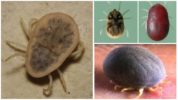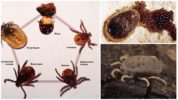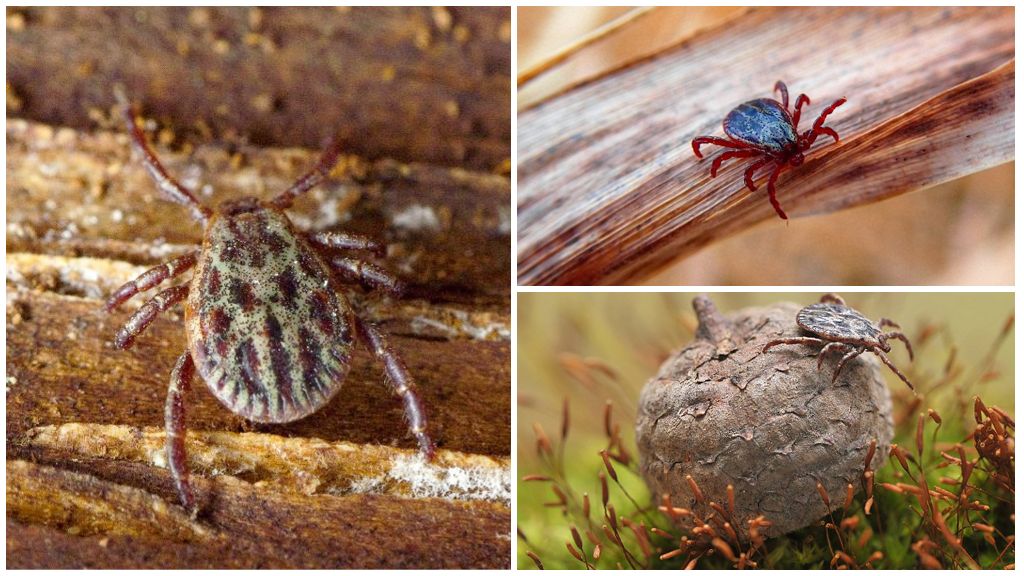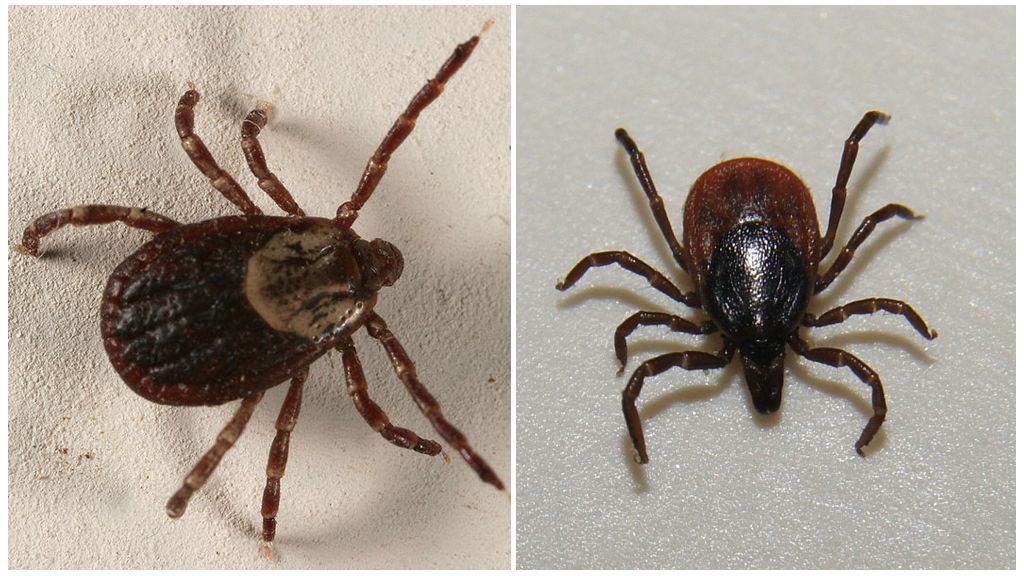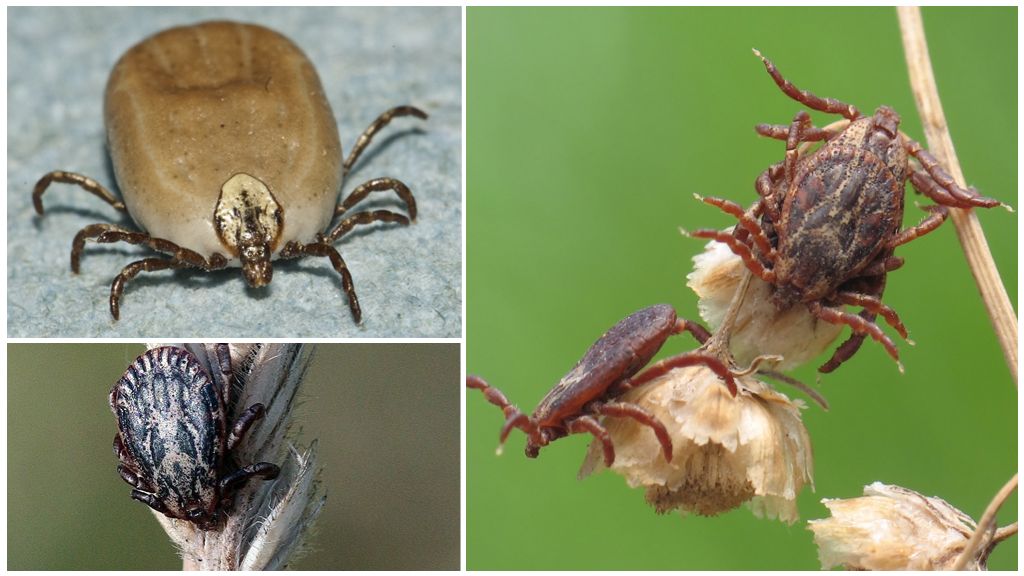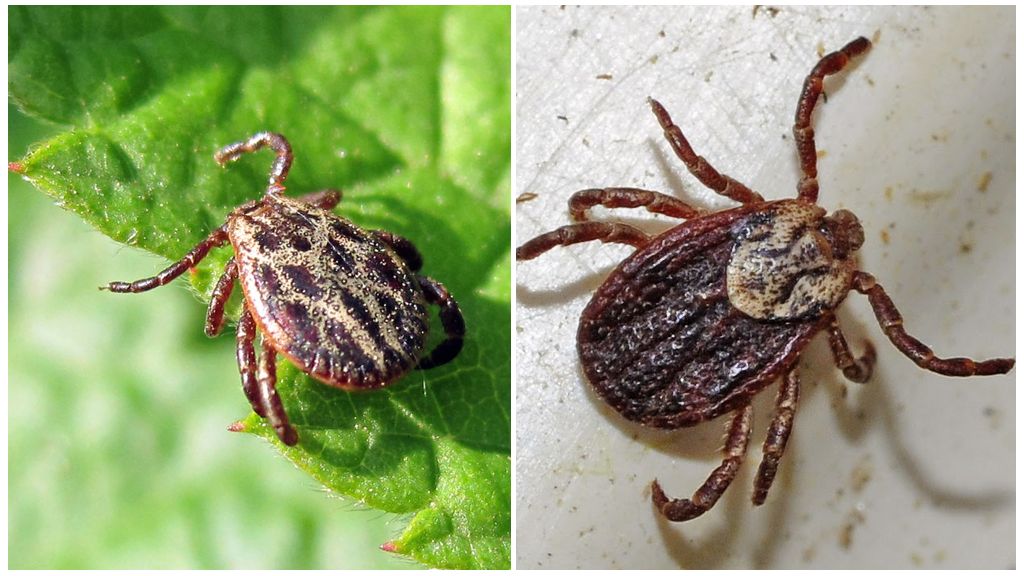- Argas Mites
- Tick Life Cycle
Argasum mites are members of the subfamily ixoid parasites. They are less known than their immediate family, but also pose a threat to human health. The main source of nutrition is the blood of birds and mammals. On humans, they parasitize less frequently.
Appearance and structure of an argas tick
Ticks often mistakenly called insects, but they belong to arthropods, to the class of arachnids. The morphology of argas ticks is similar to other parasites of the family. This variety is one of the largest - the length of their body varies from 3 to 30 mm. The appearance of the tick resembles a flattened mushroom cap oval. Body color can vary from gray or brown to brown and dark red, depending on whether the tick has drunk blood or not. An orange border runs along the edges of the back.
Interesting!
Photos of argus ticks clearly demonstrate how they look live and how much they increase in sizeswhen the blood gets drunk.
On the abdomen there are pronounced leathery folds that swell when the parasite is filled with blood. About 1 hour after the bite, the body of the bloodsucker becomes spherical and increases several times. An argas tick has 4 pairs of limbs, on which it moves slowly. The oral apparatus is a small jaw for biting through the skin and the proboscis through which bloodsucking is performed.
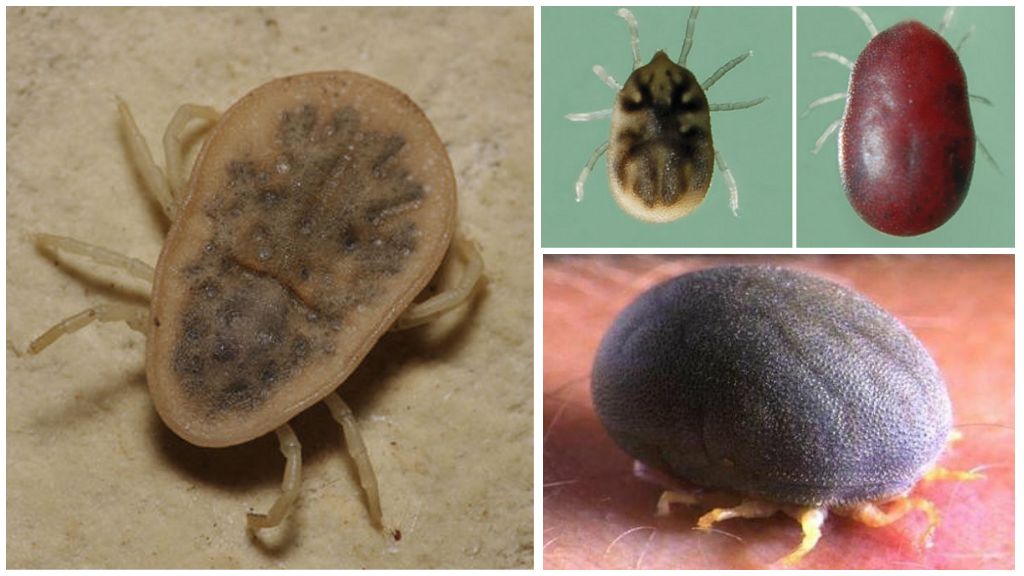
Species of ticks
About 200 species of parasites belong to the family of argus ticks. All of them lead a secretive lifestyle. Them habitat covers a large territory of Eurasia, mainly the southern regions of Russia, the Caucasus, the CIS countries. Some species of argas mites live in Africa, North America. They can be found in caves, crevices of mountains, in the crevices of houses, sheds. The most famous species:
- Settlement - got its name due to the preference for eating the blood of livestock in rural areas. It occurs in the territory of the CIS countries. Farmers and villagers are well acquainted with this parasite. It is dangerous because it is a carrier of spirochetes, the causative agents of tick-borne relapsing fever and borreliosis. Animals affected by tick bites begin to behave excitedly, trembling appears in the limbs and foam from the mouth. Most often, parasites can be found in the ears of animals, in the inguinal region.
- Chicken mite or Persian - parasitizes on poultry. It lives in the crevices of the chicken coop. Hunts at night, falling from the ceiling on a bird. Sucking blood, causes discomfort to the inhabitants of the house. A massive attack on a bird can lead to its death. It can live in residential buildings and bite people, causing a severe allergic reaction. It originates from Persia and Egypt, where the fever caused by bites of bloodsuckers was first detected.
- A shell mite is a parasite of pigeons and sometimes other birds. The habitat of a bloodsucker are Europe, North America, Africa. Prefers dark places: caves, hollow trees, crevices of houses. Attacks the victim at night, feeding on her blood. Not having a suitable food source nearby can bite a person. This parasite is suspected of carrying Q fever.
Reproduction and developmental stages
The female argas tick differs from the male in larger sizes. At the end of the summer after fertilization, she needs plenty to get enough blood to lay eggs. In one clutch there can be about 100 eggs. She hides them in secluded places, laying out in several portions. After a few days, larvae appear. They resemble underdeveloped adults on long limbs.

On a note!
The entire life cycle of an argas parasite takes an average of 2-3 years. But in a constant food source ticks can live 20 years.
Immediately after its birth, the larva is ready to feed on the blood of victims. The more blood she sucks, the faster it will turn into the next form of development - a nymph. There are three parasitic stages of the nymph. Under favorable conditions, a complete conversion from an egg to an adult takes a year. If nutrition is limited, this process may take 2 years.
The danger of tick bites for humans
Argas parasites can attack people if they lack food and in the absence of their potential victims - animals and birds. The peak of tick activity occurs at night, as it does not tolerate bright light. Bloodsuckers creep into a person’s house and at night fall on their victim from the ceiling or crawl on the bed to the sleeping victim.
An argas tick bite is quite painful, can cause severe itching and an allergic reaction. At the site of the bite, redness and swelling occurs in the form of a bubble with a liquid. This reaction is due to the fact that the saliva of the parasite contains many toxins. After him bite there is a risk of contracting such dangerous diseases:
- tick-borne relapsing fever;
- borreliosis (Lyme disease);
- hemorrhagic fever;
- Q fever
- Argazos and others.
Important!
Right away after detecting a tick bite on the body, you need to see an infectious disease doctor. He will direct the patient to surrender blood tests.
Diagnosis of diseases transmitted by an argas parasite is carried out in an infectious medical institution. At an early stage of infection, the patient passes antibiotic therapy and recovering. If you are late with treatment, the virus can infect brain cells and other important organs. In case of weak immunity of the victim, an argus tick bite can be fatal or lead to disability. Protect against ticks closed clothing will help repellents.
